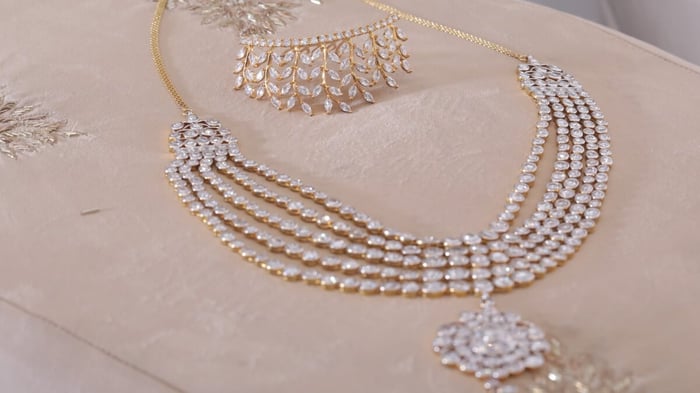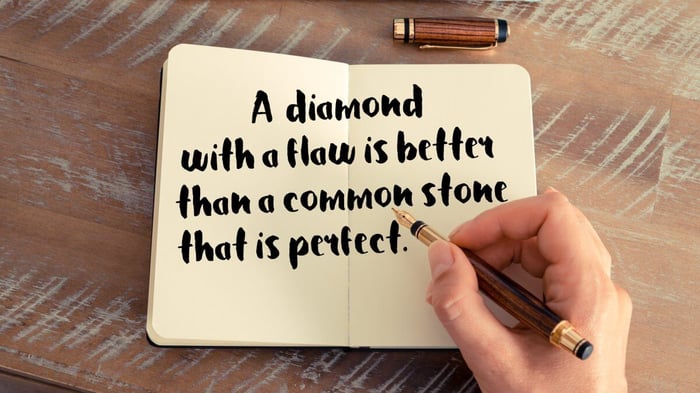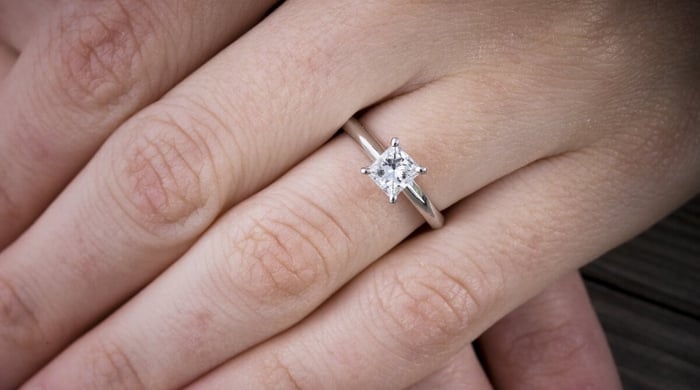Why The Four Cs Of Diamond Jewellery Are Not The Whole Story!
Diamonds are considered valuable because of their strength, beauty and rarity. Although used throughout manufacturing in drill bits and other tools, the mention of the word "diamond" usually brings to mind diamond jewellery. Diamonds have been used for at least 2,500 years. Diamonds in engagement rings date back to the 15th century. Today, diamonds for jewellery are priced according to the gemological characteristics known as the four Cs: carat, clarity, colour and cut.
The 4Cs diamond grading system was devised by the Gemological Institute of America (GIA) in the early 1940s by Robert M. Shipley, the founder of the GIA. This system has become the universal grading standard in grading laboratories worldwide. The 4Cs are also used by retail jewellers to describe the diamonds in their jewellery. Unfortunately, not all grading labs apply the same rigorous standards to their grading as the GIA.
Consumers need to know something about the 4Cs when buying diamond jewellery. However, we recommend that you do not base your choices solely on grading the fine diamond jewellery you are thinking of buying!
Two diamonds with the same grading can look quite different in real life! So, the wise course of action is to choose the diamond or diamond jewellery you like best! Use the 4Cs as a guide, not a way to make your choice!
Here are the basics of the 4Cs; armed with this knowledge, you can make informed choices, but remember, the best diamond is the one that speaks most loudly to your heart!
Diamond Carat And Clarity
The carat number shows the weight of the diamond. The price for a diamond jumps at each milestone carat weight. Hence, the value of a 1.7 carat diamond is much less than that of a 2.0 carat diamond. That is because demand for a diamond is usually measured by the carat weight. Total carat weight is the total weight of all diamonds in a piece of diamond jewellery.
Clarity measures the inclusions or defects of a diamond. Inclusions can be cracks or foreign materials, whether they can be seen by the naked eye or not. The grading of clarity depends on the inclusions' number, size, colour, location, orientation and visibility. Only 20 per cent of all diamonds are graded with a clarity level high enough to make them gemstones. The other 80 per cent are industrial diamonds. A diamond with imperfections that can't be seen without a loupe is called "eye-clean." For most jewellery buyers, an eye-clean diamond is good enough, and there is no practical need to pay more to get a diamond of higher clarity.
Certified Diamond Solitaire Engagement Ring 0.20ct E/VS Quality in Platinum
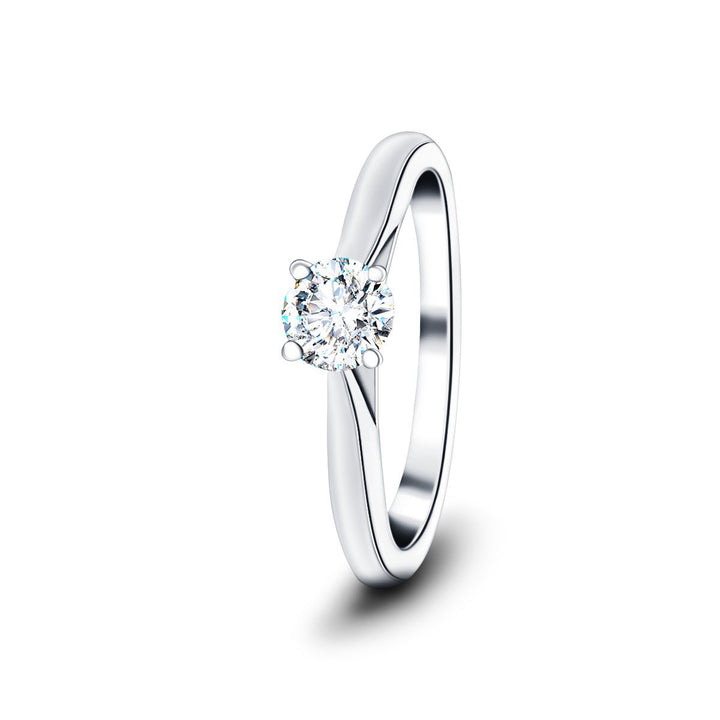
£601.00
£1,047.00
A timeless classic, this diamond engagement ring would be an excellent choice to pop the question with and will continue to delight and sparkle for many years to come. The 0.20CT E/VS quality diamond sparkles from the centre of the… read more
Diamond Colour And Cut
Almost all diamonds have some degree of colouration. A genuine natural diamond without inclusions that affect colour or clarity is white or colourless. Colouration in a diamond is caused by impurities in the crystal. The most common contaminant is nitrogen, which leads to a yellow or brown shading. Colour is graded from colourless, or "D", to bright yellow or "Z." Colorless diamonds are more valuable for diamond jewellery. However, the bright yellow colour is also rare enough to be valuable. Diamonds can also have varying degrees of pink, blue, or green. Diamonds that are noticeably coloured are very valuable and are called "fancy coloured diamonds". Pink and blue diamonds are sought after for diamond jewellery.
Cutting has been developed for hundreds of years with tremendous strides made by Marcel Tolkowsky, a mathematician and gemologist. The most common cut for a jewellery diamond is the round brilliant with 57 facets or polished faces. Only the round brilliant cut has very precise measurements that must be adhered to. Cuts other than the round brilliant are called "fancy cuts."
The baguette, marquise, princess, heart, briolette and pear are popular cuts. The value attached to cuts is usually determined by fashion. During the art deco period, the baguette cut was popular. It emphasises the diamond's lustre while downplaying its fire. The princess or square cut is currently gaining popularity. Since it wastes the least amount of rough diamond compared to other cuts, it is popular among diamond cutters, too.
How Can Two Diamonds Of Identical Grade Look Different?
Diamond grading is subjective
Although highly trained specialists use complex and costly equipment to grade diamonds, almost every aspect of diamond grading apart from the carat weight is a subjective opinion. Reputable grading labs usually work to strict standards and often have a second opinion to confirm grading. It is considered normal and acceptable for different graders to reach a conclusion that varies from another by a whole grade level for each attribute. So, one grader or laboratory may give a diamond a colour grade of G (near colourless). Another grader might give a grade of F (colourless) or H (still within the near colourless range).
Diamond Cross Necklace with 1.00ct G/SI Diamonds in 18K White Gold
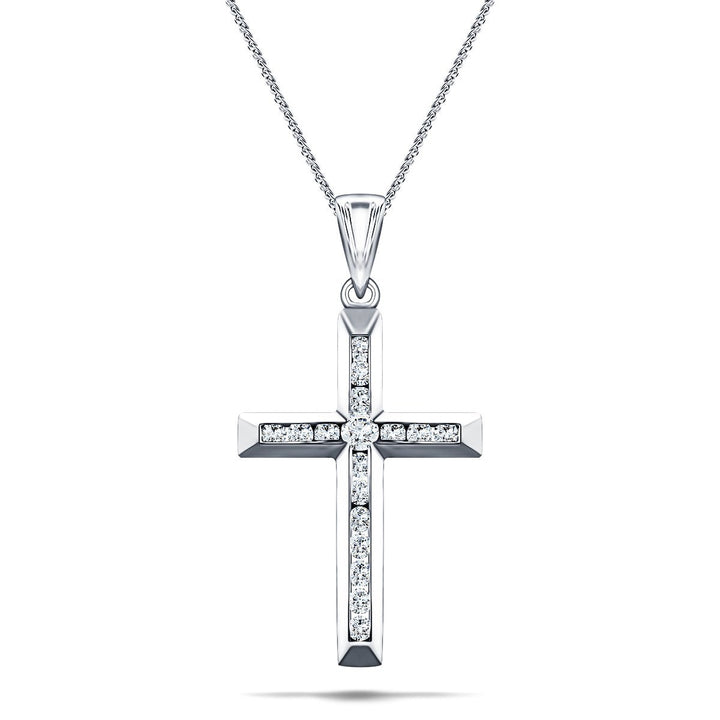
£1,452.00
£2,477.00
This elegant diamond cross pendant is a truly luxurious piece of fine UK hallmarked jewellery with G/SI quality. It is handcrafted with 1.00 carat of diamonds and fine 18K white gold. This diamond cross necklace makes a perfect gift -… read more
Diamond clarity grade subjectivity effects
In the clarity grade, while inclusions and flaws are recorded on a diagram, the grade is still a subjective opinion. Different forms of inclusion can have different visual effects on the diamond's light performance. For example, a feather inclusion might have a more significant impact on the appearance of the diamond in a piece of jewellery than a single microscopic crystalline or carbon inclusion. This effect is magnified by how an artisan can choose to set the diamond into the jewellery. He can use the prongs or other setting types to conceal some flaws, depending upon their position. The grading report is created for loose diamonds with no accounting for the eventual setting in jewellery.
How a diamond's shape alters its apparent size
Even the diamond shape can have an effect! For example, a round brilliant cut diamond will tend to conceal colouration better than an emerald cut diamond with its larger table size.
The shape of the diamond also affects the apparent size of the diamond! A round brilliant diamond is cut with a deep profile to maximise sparkle and brilliance. This means a round and cushion of the same carat weight will look quite different in apparent size when mounted on a ring! A cushion cut has almost as much sparkle and brilliance but is less deep and wider from corner to corner.
Buy The Diamond You Love!
The four Cs of diamond jewellery help determine a diamond's value, but not necessarily its beauty. When shopping for diamond jewellery, buy with your heart, not your head.
The 4Cs are an invaluable aid to help you make a good choice, but as you have seen, they should not make your final choice. We can guide you toward good decisions. At All Diamond, we use grading to enable us to choose diamonds that are of similar quality and will be consistent in appearance when set into jewellery. That is the reason why most of our diamond jewellery uses diamonds that are graded G/SI for colour and clarity. We know that a G, near colourless colour grade, is almost impossible to tell apart from a colourless graded diamond. The cost of G grade diamond is significantly lower than an F grade. Still, in the eyes of almost all buyers, it is just as colourless.
We tend to use SI clarity graded diamonds for the same reason. At this level, the clarity is almost impossible to tell apart from VS (very slightly included) grades. However, grades (I1, I2 and I3) are usually of visibly lower quality. The grades we use are in a sweet spot for quality and price in colour and clarity.
Certified Diamond Solitaire Engagement Ring 0.40ct E/VS Quality in Platinum
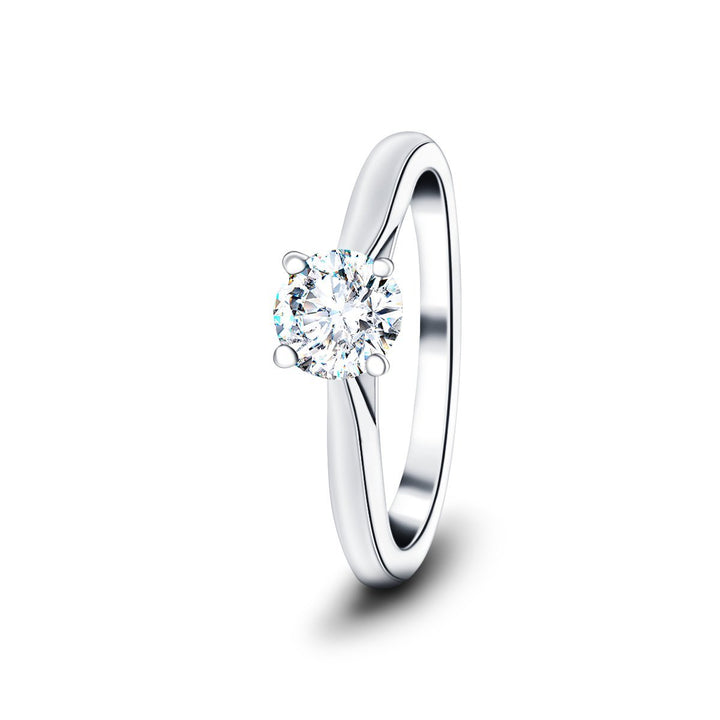
£1,116.00
£1,867.00
Engagement rings are a symbol of love and commitment. Choose a lovely piece from our wide selection of beautiful solitaire rings to show her how much you love her. This timeless piece is a great way to start your marriage… read more
Browse Our Fine Diamond Jewellery Collections
We are proud of the designers and artisans who create our fine diamond jewellery. Each piece is designed and handcrafted here in the UK.
We know that the only way to know if a piece of jewellery is absolutely right for you is to hold it in your hand and see it in the conditions where it will be worn. For that reason, we offer a 30-day return and exchange policy.
To support your confidence and peace of mind, we provide a lifetime workmanship guarantee on all of our jewellery.
We want you to be happy with your jewellery for a lifetime of new memories! We are confident that the work of our artisans and designers will inspire you! Please browse our collections here.
Remember, the only person who has to love a diamond is the person wearing it! No matter what the grade of a diamond is, that is always true!
